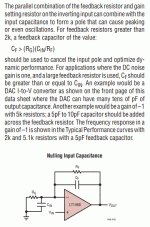Well, I tried another two setups, that did not work.
Firstly, I used resistors in the range of 0-22kΩ, to isolate coaxial no10 going into the mixer (the resistor was added to the inverting input of the opamp). This did not work, for the whole range of 0-22k. (I used a pot)
Secondly, I changed the coaxial no10 to a simple twisted wire (two 22awg wires twisted together at about 5-6mm knot size). This did not work either.
This means that for the time being, I will isolate all coaxials going into the mixer using an extra relay switching stage. So the only noise picked up will be a 5-6cm wire (coaxial or twisted) going into the inverting pin, plus about 5cm of parallel traces in FR4 (top-bottom layer). I sincerely hope that this noise contribution will be quiet enough. 🙄
A huge thanks to everyone that replied, you made my life easier and I learned some things. If I ever happen to solve this because I have either the time or luck 🙂p), I will post my findings here. 🙂
Firstly, I used resistors in the range of 0-22kΩ, to isolate coaxial no10 going into the mixer (the resistor was added to the inverting input of the opamp). This did not work, for the whole range of 0-22k. (I used a pot)
Secondly, I changed the coaxial no10 to a simple twisted wire (two 22awg wires twisted together at about 5-6mm knot size). This did not work either.
This means that for the time being, I will isolate all coaxials going into the mixer using an extra relay switching stage. So the only noise picked up will be a 5-6cm wire (coaxial or twisted) going into the inverting pin, plus about 5cm of parallel traces in FR4 (top-bottom layer). I sincerely hope that this noise contribution will be quiet enough. 🙄
A huge thanks to everyone that replied, you made my life easier and I learned some things. If I ever happen to solve this because I have either the time or luck 🙂p), I will post my findings here. 🙂
What is the actual schematic?
It is quite significant.
Jn
Post #34, just with 10 such coaxials and isolated sources, not one.
